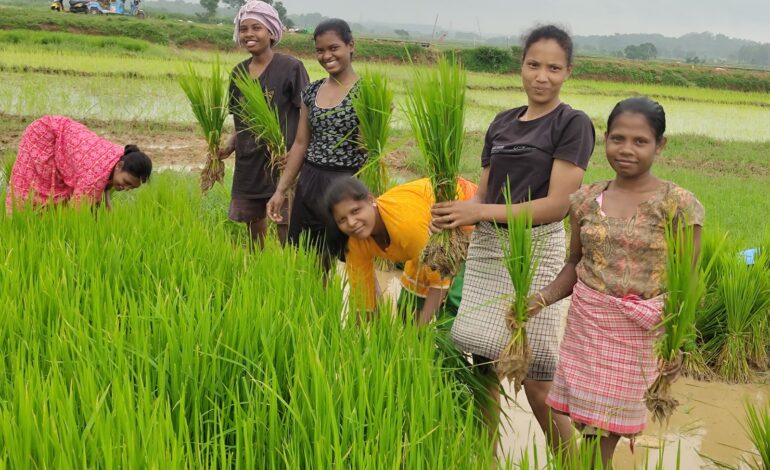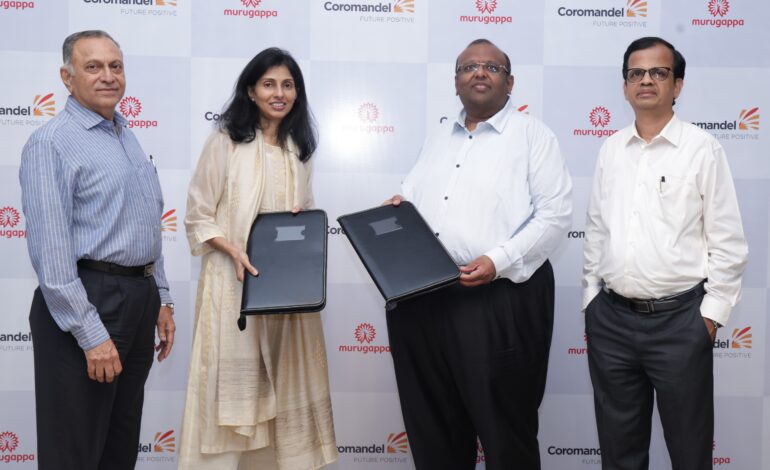Women’s Participation in Agricultural Education Surges over the Past Decade: Dr. R C Agrawal, DDG-Education, ICAR

While discussing the landscape of agricultural education with Pravash Pradhan, Editor of Smart Agripost, Dr. R C Agrawal, Deputy Director General (Education) at ICAR, highlighted the increasing enrollment of female students in agricultural colleges and universities. He also emphasized the need
for greater investment in agricultural research to ensure the sector’s sustainable development.
Q: What is the current scenario of agriculture education in the country?
Ans: India currently boasts 77 government-funded agriculture universities, including 66 state agriculture universities, 3 central agriculture universities, 4 deemed universities, and 4 central universities with agricultural faculties, such as Banaras Hindu University, Nagaland University, and Aligarh Muslim
University. These universities cover a broad range of fields beyond crop science, including veterinary sciences, fisheries, forestry, and dairying. Presently, the undergraduate intake is around 32,000 students, with approximately 12,000 in MSc programs and 5,000 in PhD programs.
Q: What impact has the new education policy had on the agriculture sector?
Ans: The National Education Policy (NEP) is highly supportive, emphasizing vocational training, multiple entry and exit options, and flexibility in course selection. Students can now pursue certificates, diplomas, and degree programs across various institutions, with credits reflected through the Academic Bank of Credit (ABC) system. The policy also enhances student engagement and community connection, revising curricula to support career paths in employment, entrepreneurship, or government service. A
key focus is on fostering entrepreneurship to create job providers rather than job seekers.
Q: How challenging has the transition from the old system to the new system been, and is there sufficient budgetary support?
Ans: The transition has been relatively smooth in agriculture education, with about 80% of the provisions already in place, such as four-year degree programs and community connect initiatives. While new elements like the Academic Bank of Credit and multiple entry-exit options are being integrated, the process is underway. The shift to a unified examination system through the Combined University Entrance Test (CUET) has reduced stress for students and streamlined admissions.
Q: Have the new education policies and entrance systems been fully implemented?
Ans: Yes, the transition to the CUET began two years ago, along with other provisions like the Academic Bank of Credit and the National Institutional Ranking Framework (NIRF). Indian Agricultural Research Institute (IARI) now ranks second among deemed universities, and Dr. Rajendra Prasad Central
Agricultural University, Samastipur, has risen to 7th place among Central Universities. This reflects the improved standards and competition among agricultural and traditional universities.
Q: What is the current status of women’s participation in agricultural education?
Ans: Women’s participation has significantly increased from 23% to 49.3% over the past 8-9 years. Initiatives like prioritizing funding for women’s hostels and the National Agricultural Higher Education Project (NAHEP), which ensures 33% female participation in international programs, have contributed to this rise. Girls also outperform their male counterparts in academic achievements, with high competition for available seats indicating a growing interest among women in agriculture education.
Q: Can students from non-science backgrounds pursue undergraduate or graduate programs in agriculture?
Ans: Yes, students from diverse academic backgrounds can be admitted if they have taken agriculture in their 12th grade, along with subjects like physics, biology, or mathematics. Various subject combinations are accepted for eligibility.
Q: Are there plans to introduce agriculture education at primary or higher secondary schools?
Ans: A committee, including ICAR, has developed a course on agriculture for primary to higher secondary levels, which is currently under review. Once finalized, this curriculum will be implemented in schools.
Q: What is your perspective on investing in agricultural research?
Ans: Investment in agricultural research is crucial, yielding significant returns. According to recent findings, every rupee invested in agriculture research generates a return of 13 rupees. Since agriculture impacts many sustainable development goals, increased investment in research, education, and
extension programs is essential for a sustainable and self-reliant nation.
Q: What are ICAR’s plans for skilling and capacity building in agriculture and allied sectors?
Ans: ICAR has introduced diploma courses for students after 10th grade and vocational training programs ranging from short courses to extended durations. These initiatives aim to enhance skills in agriculture practices and support self-employment and small-scale entrepreneurship in rural areas. The
programs involve ICAR’s research institutes and Krishi Vigyan Kendras (KVKs) to reach a large number of rural youths.






